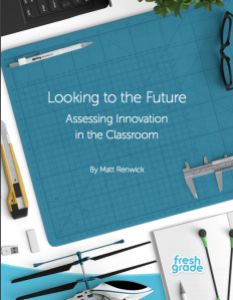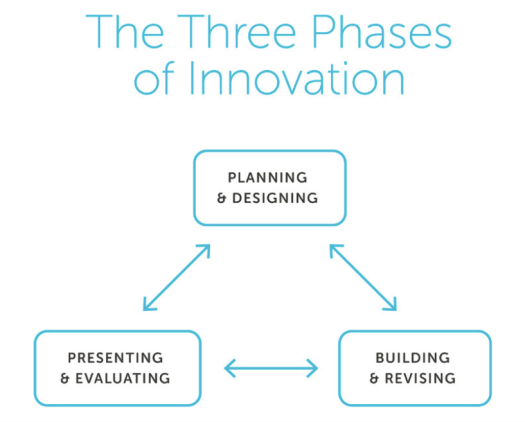 One of the most pressing questions I hear from teachers is: How do I guide my students to create and innovate in the classroom while still meeting education’s expectations? We feel this push, both internally and externally, to get students to reach certain levels of success. But what do we lose in the process?
One of the most pressing questions I hear from teachers is: How do I guide my students to create and innovate in the classroom while still meeting education’s expectations? We feel this push, both internally and externally, to get students to reach certain levels of success. But what do we lose in the process?
Looking to the Future: Assessing Innovation in the Classroom, a free resource from FreshGrade, explores this challenge. In my new eBook, I break down this inquiry into three guiding questions:
1. Why should we assess innovation?
2. What if we could engage students in learning and help them achieve in school?
3. How might we assess innovation in education?
During the writing process of this book, I came across a few insights.
- Meeting standards and proficiency levels are not enough. We have a real crisis in education: the longer students are in school, the less engaged they are in learning. This issue should be as or more important than how a school is faring on their standardized test scores. To increase engagement, we have to rethink instruction. A starting point would be to open up a part of our day for student choice and voice. Innovative learning opportunities for this work include Genius Hour, coding and gaming, and making and tinkering. Each approach is covered in depth in this new eBook.
- The future will be most friendly to the question-askers. Problem-solving is a critical skill to develop with kids. But it is not enough in a world awash in information yet still lacking deep knowledge. Knowledge, meaning true understanding of big issues and concepts, is developed in people when they explore personal questions of importance. They follow these inquiries because they are passionate about the topics. That’s why students have to be taught how to question, develop a plan, and follow an investigation to an acceptable outcome, in addition to solving pre-determined problems. A template for self-directed learning is provided in the eBook.
- Facilitating innovation in the classroom is a nonlinear process. How do you remember being taught the scientific method? A linear, logical process, right? I believe through my own research and experiences that this is inaccurate. Most inquiry-based learning experiences, whether in science or any other disciplines, is nonlinear. Questions are revisited based on new findings. Outcomes are sometimes a starting point for a new investigation. If we can think of innovation in the classroom as a process, it would be a more circuitous, continuous experience.

My hope for readers of this eBook is they walk away with assessment strategies and planning tools to facilitate innovation in the classroom. Specifically, you will find:
- Vignettes from real classrooms exploring Genius Hour, coding, and making
- A crosswalk between these practices and the ISTE Student Standards
- Templates to prepare for innovating in the classroom and self-directed learning
- Ideas for assessing innovation in the classroom using FreshGrade, a digital portfolio tool
As the adage goes, there’s no time like the present. Download my free eBook Looking to the Future: Assessing Innovation in the Classroom today and start planning for Monday. Your students will thank you!

